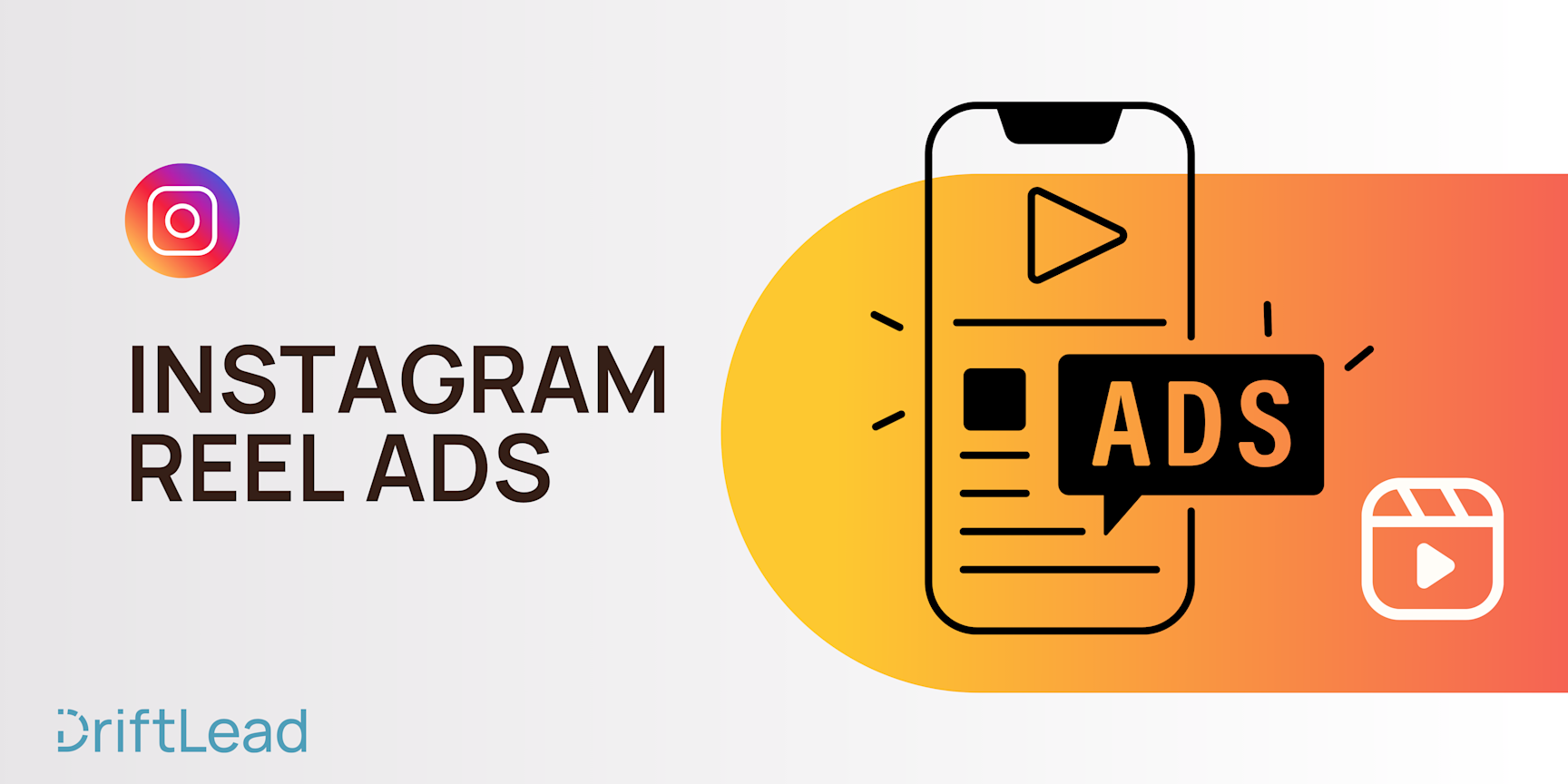A/B Testing in Google Ads: A Guide to Optimizing Your Campaigns
03 Oct, 2023
Get more out of your Google Ads campaigns with AB testing. Learn how to implement split tests in your campaigns and continuously optimize to get better results.

Jump to:
#ppc
Hop on our weekly newsletter train! We're sharing tips so stellar, we're practically job-threatening ourselves!
"Would you rather?" - a game many of us played as kids, pitting two options against each other and forcing a choice. As adults (and digital marketers), the game takes a more sophisticated form: "Which ad performs better?" 🤓 Instead of relying on gut feelings or crystal balls, we turn to A/B testing in Google Ads, the grown-up's version of optimizing choices. A/B testing is the unsung hero of the advertising world, often separating the "meh" assets and tactics from the "mind-blowingly effective" ones.
In the bustling streets of the digital marketplace, your ad needs to shine, resonate, and most importantly, convert. But how do you know if your snazzy new headline works better than the old one? Or if that call-to-action button in cool aqua outperforms the one in fiery red? Enter: A/B testing, the tried and true method of putting your campaigns under the microscope and letting your audience's behavior guide your next moves.
In this guide, we'll delve into the magic of A/B testing within Google Ads. From setting up your tests to interpreting the treasure trove of data they yield, we're here to ensure your campaigns aren't just running, but sprinting towards success. So, buckle up and let's embark on this optimization odyssey! 🚀
Basics of A/B Testing in Google Ads
Okay, for the uninitiated, let's break this down. Imagine you're at a dessert cafe, torn between classic cheesecake and a zesty lemon tart. Tough choice, right? 🍰 Now, imagine you could taste both simultaneously, measure the flavor explosion in your mouth, and make an informed decision. That's what A/B testing in Google Ads feels like – but for your campaigns.
What is A/B Testing?
A/B testing, often dubbed "split testing", is a method where you run two variations of an ad to determine which one performs better in achieving a specific goal. Anyone who manages ad campaigns probably knows that testing is the name of the game. And split testing is the best way you can get a read on which ads, keywords, match types, bidding strategies, etc. perform against each other.
Benefits of A/B Testing
Think of Google Ads as your digital billboard. Millions may pass by, but what catches their eye? What prompts them to take action? What gives you a better ROI? A/B testing helps refine and answer these questions (and many others.) By testing variations, you're essentially letting your audience vote with their clicks and conversions on what resonates more.
Components of A/B Testing:
Variation A & B:
These are your two contenders. Variation A can be your current ad (often called the 'control'), while Variation B is the modified version you're testing against it.
Testing Element:
Decide on one element to test at a time. This could be the headline, ad copy, CTA, display URL, or any other component of the ad. Remember the golden rule: change only one thing at a time!
Duration:
Like a good marinade, A/B tests need time. Don't cut the test short, or you may not gather enough data for a clear winner.
Audience:
Ensure both ad variations are shown to a similar and random audience segment. This maintains the integrity and reliability of the results.
How Does Google Ads Facilitate A/B Testing?
Google Ads comes equipped with a nifty tool called "Experiments." Found near the bottom of the side menu, this section allows advertisers to effortlessly create and measure the performance of their split tests. So, no need for third-party tools or complex setups. Google's got you covered!
How Does Google Ads Facilitate A/B Testing?
Google Ads comes equipped with a nifty tool called "Ad Variations." Found within the 'Drafts & Experiments' section, this feature allows advertisers to effortlessly create and measure the performance of their split tests. So, no need for third-party tools or complex setups. Google's got you covered!
In essence, A/B testing is like the "try before you buy" of the advertising world. Instead of gambling your budget on assumptions, you get data-driven insights to inform your strategy, giving your campaigns that added zing! 🍋🍰
How to Set Up A/B Tests in Google Ads
In Google Ads, A/B testing—or split testing—is about making incremental tweaks to your ad to see which version performs better in terms of engagement, click-through rates, and conversions. Given the fluid nature of user behavior, it's crucial to be methodical when setting up these tests. Luckily, Google Ads offers various tools to assist you, including custom experiments, ad variations, and Performance Max experiments. Here's a step-by-step breakdown:
1. Custom Experiments:
What they are: Custom experiments allow you to create a variant of your original campaign and measure its performance against the original over time.
How to Set Up:
Navigate to Campaigns in your Google Ads account.
Choose Experiments from the dropdown.
Click the plus button and select Custom experiment
Define the scope, set the experiment split (cookie-based or search-based are popular choices), and schedule your experiment.
Once set, monitor the experiment's performance to gain insights and make data-backed decisions.
2. Ad Variations:
What they are: Ad variations enable you to experiment with different ad texts or calls to action across multiple campaigns or your entire account.
How to Use:
Decide on the scope: whether the entire account, specific campaigns, or a custom scope.
Choose the ad type you want to vary, such as text ads or responsive search ads.
Implement the variation, e.g., changing “Local Hotels” to “Nearby Hotels”.
Decide on the traffic percentage for your varied ads and set an end date for your experiment.
Monitor the performance of your ad variations. If pleased with the results, you can apply the changes either by replacing the existing ads or creating new ads.
When to Use: Opt for ad variations when you aim to test a singular change across many campaigns. For multiple changes on a smaller scale, consider custom experiments.
3. Performance Max Experiments:
What they are: These are tools designed to help you A/B test different features, settings, and campaigns using Performance Max.
How it Works:
An experiment is divided into a control group and a trial group.
Performance Max will only showcase ads to viewers in the trial group, while the control group viewers won't see these ads.
The selected Performance Max campaign will run only on 50% of the eligible traffic during the experiment.
Best Practices for A/B Testing
A/B testing is a powerful tool in the hands of advertisers, allowing for informed decisions based on real-world data. When executed correctly, A/B testing can lead to improved performance, higher conversion rates, and increased ROI. Below are some best practices to ensure that your A/B testing in Google Ads is effective and meaningful.
Define Clear Objectives:
Before starting any A/B test, outline what you want to achieve. Whether it's improving click-through rates (CTR), boosting conversions, or enhancing ad engagement, a clear objective will guide your testing efforts.
Only Test One Element at a Time:
It's tempting to change multiple elements in an ad variant, but doing so will make it difficult to determine which change influenced the outcome. Test singular elements like headlines, descriptions, or display paths for clarity in results.
Ensure Statistical Significance:
Make sure your results aren’t just a fluke. Use statistical tools and calculators to ensure that your results are statistically significant, generally aiming for a confidence level of at least 95%.
Use a Representative Sample Size:
Ensure that the traffic split between your original ad and the variant is substantial enough to draw accurate conclusions. Too small a sample might lead to skewed results.
Run Tests for an Adequate Duration:
While you may be eager to see results, ending tests prematurely can lead to inaccurate conclusions. Let your tests run long enough to account for any anomalies or fluctuations, typically a minimum of two weeks or until you achieve statistical significance.
Keep External Factors in Mind:
Consider external influences that might skew your results, like holidays, weekends, or major events. These can cause abnormal spikes or dips in traffic and engagement.
Document Everything:
Keep detailed records of what was tested, the duration of the test, results, and any insights gained. This documentation becomes invaluable when planning future tests.
Avoid Testing Too Many Variants Simultaneously:
While it's possible to test more than two versions (A/B/C testing), doing so requires much more traffic to achieve statistical significance. For most campaigns, traditional A/B testing is sufficient.
Use the Learnings:
After concluding a test, analyze the results and determine the next steps. Whether implementing the winning variant, tweaking the losing one, or setting up a new test entirely, always act on the insights.
Stay Updated:
Digital advertising platforms, including Google Ads, are continually evolving. Stay updated with platform changes, new features, and best practices to ensure that your A/B tests remain relevant and effective.
11. Re-Test Periodically:
User behaviors, platform algorithms, and industry standards change. What worked once might not be as effective in the future. Periodically revisit past tests to ensure that your ads remain optimized.
How to Analyze A/B Testing Results
Analyzing the results of your A/B tests is crucial to understanding the effectiveness of your changes and making data-driven decisions. Here's a step-by-step guide to help you make sense of your test results:
Gather Your Data:
Before diving into analysis, ensure you've collected all necessary data. This includes metrics like clicks, impressions, click-through rate (CTR), conversions, cost per conversion, average position, and more, depending on your testing objectives.
Check for Statistical Significance:
Use a statistical significance calculator to ensure your results are not just due to random chance. Aim for a confidence level of at least 95% to confirm that the observed differences are likely real and not due to random variations.
Review Primary Metrics:
If your goal was to increase CTR, focus on that metric first. Compare the CTR of your original ad (A) to your variant (B). Which performed better and by how much?
Examine Secondary Metrics:
Even if you were primarily focused on one metric, don't neglect others. For instance, an ad with a higher CTR but a much lower conversion rate might not be as effective overall.
Calculate the Lift:
Determine the percentage improvement of your variant over the original. The formula is:
(Variant Metric - Original Metric) / Original Metric * 100
Consider External Factors:
Were there any external events or influences that could have affected the results? Consider seasonality, holidays, industry events, or broader economic factors.
Dive Deeper with Segment Analysis:
Google Ads allows you to segment your data by devices, ad positions, days of the week, geographic regions, and more. This can provide additional insights. For instance, your variant might perform exceptionally well on mobile but not on desktop.
Analyze Cost Efficiency:
If two ads have similar conversion rates, but one has a significantly lower cost per conversion, it might be the more cost-efficient choice.
Review User Behavior and Engagement:
Using tools like Google Analytics in tandem with Google Ads can offer deeper insights into how users behave after they click on an ad. Metrics like bounce rate, session duration, and pages per session can provide a more comprehensive view of user engagement.
Document and Share Findings:
Keeping a detailed record of your tests, hypotheses, results, and analysis can be invaluable for future tests. Share your findings with your team to make collective, informed decisions
11. Decide on Next Steps
Based on your analysis, determine what to do next:
Implement the Winning Variant: If the variant outperformed the original, consider implementing it and potentially phasing out the original.
Refine and Retest: If results were inconclusive, or if there’s still potential for improvement, consider refining your changes and conducting another test.
Maintain the Original: If the original ad outperformed the variant, stick with it. But don’t be disheartened – every test offers valuable insights.
12. Continuously Learn and Optimize
A/B testing is not a one-time task. The digital advertising landscape is always evolving. Regularly conduct new tests to stay ahead and keep optimizing.
Challenges & Pitfalls to Avoid
A/B testing is a powerful tool in the arsenal of digital advertisers. However, if not approached with caution and precision, it can lead to misinterpretations and misguided decisions. Here are some common challenges and pitfalls to avoid:
Not Testing Long Enough:
Pitfall: Concluding a test too early can lead to decisions based on incomplete data.
Solution: Ensure that you run the test for a sufficient duration to achieve statistical significance.
Testing Too Many Variables at Once:
Pitfall: If you change multiple ad elements simultaneously, you won't know which change influenced the results.
Solution: Test one variable at a time to isolate the effect of each change.
Ignoring Statistical Significance:
Pitfall: Making decisions without enough data can lead to results driven by random chance rather than genuine improvements.
Solution: Always check for statistical significance before concluding a test.
Over-reliance on Historical Data:
Pitfall: Assuming that what worked in the past will continue to work can blindside you to new trends or shifts in user behavior.
Solution: While past tests can guide, always be ready to challenge previous findings with fresh tests.
Not Accounting for External Factors:
Pitfall: Seasonal trends, holidays, industry events, and other external factors can skew your A/B test results.
Solution: Be aware of these factors and try to conduct tests during consistent periods or account for these variables in your analysis.
Neglecting Mobile vs. Desktop Differences:
Pitfall: Assuming that an ad that performs well on desktop will have the same impact on mobile.
Solution: Segment your results by device type and consider running device-specific tests.
Setting and Forgetting:
Pitfall: Assuming that once a test is running, no further monitoring is needed.
Solution: Regularly monitor ongoing tests to ensure there are no anomalies or unexpected shifts in data.
Confirmation Bias:
Pitfall: Favoring results that confirm your pre-existing beliefs or desires.
Solution: Approach tests with an open mind, and be ready to accept results even if they contradict your hypotheses.
Not Testing Bold Changes:
Pitfall: Making only minor tweaks in fear of rocking the boat.
Solution: While small changes can bring incremental gains, don't be afraid to test more significant changes that might unlock more considerable improvements.
Failure to Document:
Pitfall: Not recording the details, results, and insights from each test.
Solution: Maintain a detailed log of all tests, findings, and decisions. This will be invaluable for future tests and for sharing insights with the team.
Stopping at One Test:
Pitfall: Assuming that once you've found a winner, no further optimization is needed.
Solution: Always be in the mindset of continuous improvement. Even if you've found a winning ad, think of new hypotheses to test and optimize further.
Ignoring the Big Picture:
Pitfall: Over-focusing on micro-conversions or clicks and neglecting overall business objectives or revenue.
Solution: Always align your tests with broader business goals and look beyond mere engagement metrics.
A/B testing is as much an art as it is a science. While these guidelines can help you avoid common pitfalls, always be open to learning from mistakes, iterating, and refining your testing process.
How Continuous A/B Testing Optimizes Campaigns
The world of digital marketing thrives on data and iterations. And when it comes to making the most informed decisions, continuous A/B testing is the marketer's secret weapon. Now, let's dive deeper into the benefits of continuous A/B testing:
Consistent Improvement:
Unlike one-off tests, continuous A/B testing ensures campaigns are constantly evolving and improving. Think of it as the process of sharpening a knife. A one-time sharpen might help, but with regular honing, that blade remains consistently sharp.
Adapting to Dynamic Consumer Behavior:
Consumer preferences and behaviors are ever-changing. Whether it's due to seasonal shifts, emerging trends, or global events, continuous A/B testing allows campaigns to remain fresh and relevant.
Counteracting Ad Fatigue:
Repeatedly seeing the same ad can wear on a user's patience. Continuous A/B testing offers the opportunity to regularly refresh ad content, keeping audiences engaged and reducing the dreaded "banner blindness".
Optimized ROI:
The magic of continuous A/B testing lies in the compounding of benefits over time. Even minor tweaks can lead to significant improvements in return on investment when they're iteratively built upon.
Staying a Step Ahead:
Regular A/B testing means you're always innovating, refining, and improving, which can give you a competitive edge. While others might be content with the status quo, you're forging ahead, fueled by data and insights.
Enhanced User Experience:
Continual refinement via A/B tests leads to a better user experience. Every adjustment is a step towards a smoother, more engaging interface for your audience.
Remember, in the world of marketing, the only "bad test" is the one you didn't learn from. So keep splitting, tweaking, and optimizing. After all, when it comes to A/B testing, it's all about finding that "split spot"!
Closing Thoughts: The Ongoing Journey of A/B Testing
Continuous A/B testing, in particular, underscores the importance of evolution and adaptation. It's a reminder that resting on our laurels, no matter how successful a campaign may seem, can be detrimental in the long run. The digital landscape is dynamic, and the strategies that work today may not be as effective tomorrow.
But beyond the realm of clicks, conversions, and metrics, A/B testing also teaches us a valuable life lesson: Embrace change, be adaptable, and always remain curious. Because in the quest for better results and higher engagement, it's this relentless curiosity, paired with actionable data, that keeps us moving forward.
So, as you wrap up this guide and set forth on your marketing endeavors, remember: every test, every tweak, and every result is a step towards a better understanding of your audience and a more successful campaign. And of course, if you are feeling overwhelmed or need help getting better results from your campaigns, request a free marketing plan today! Happy testing!






